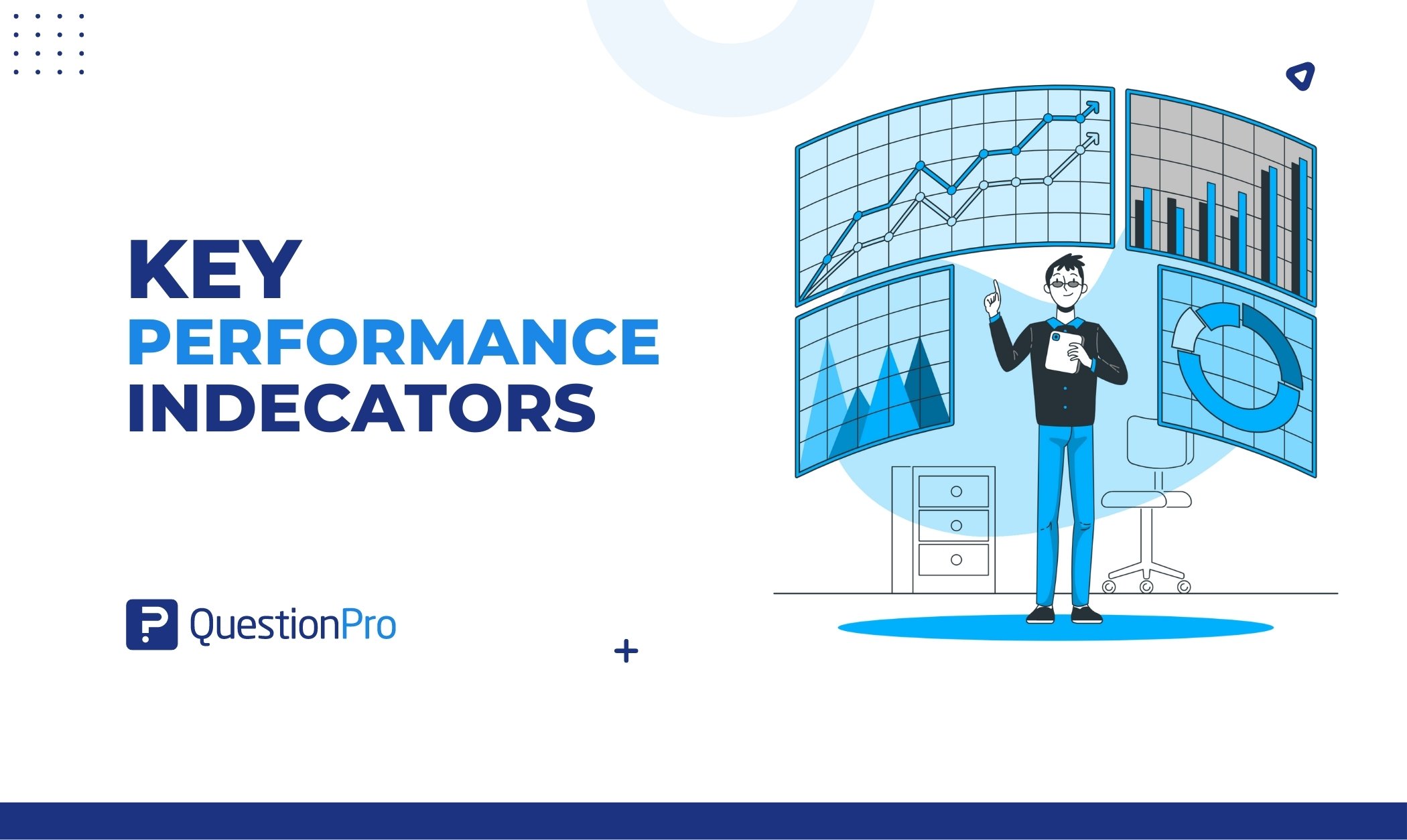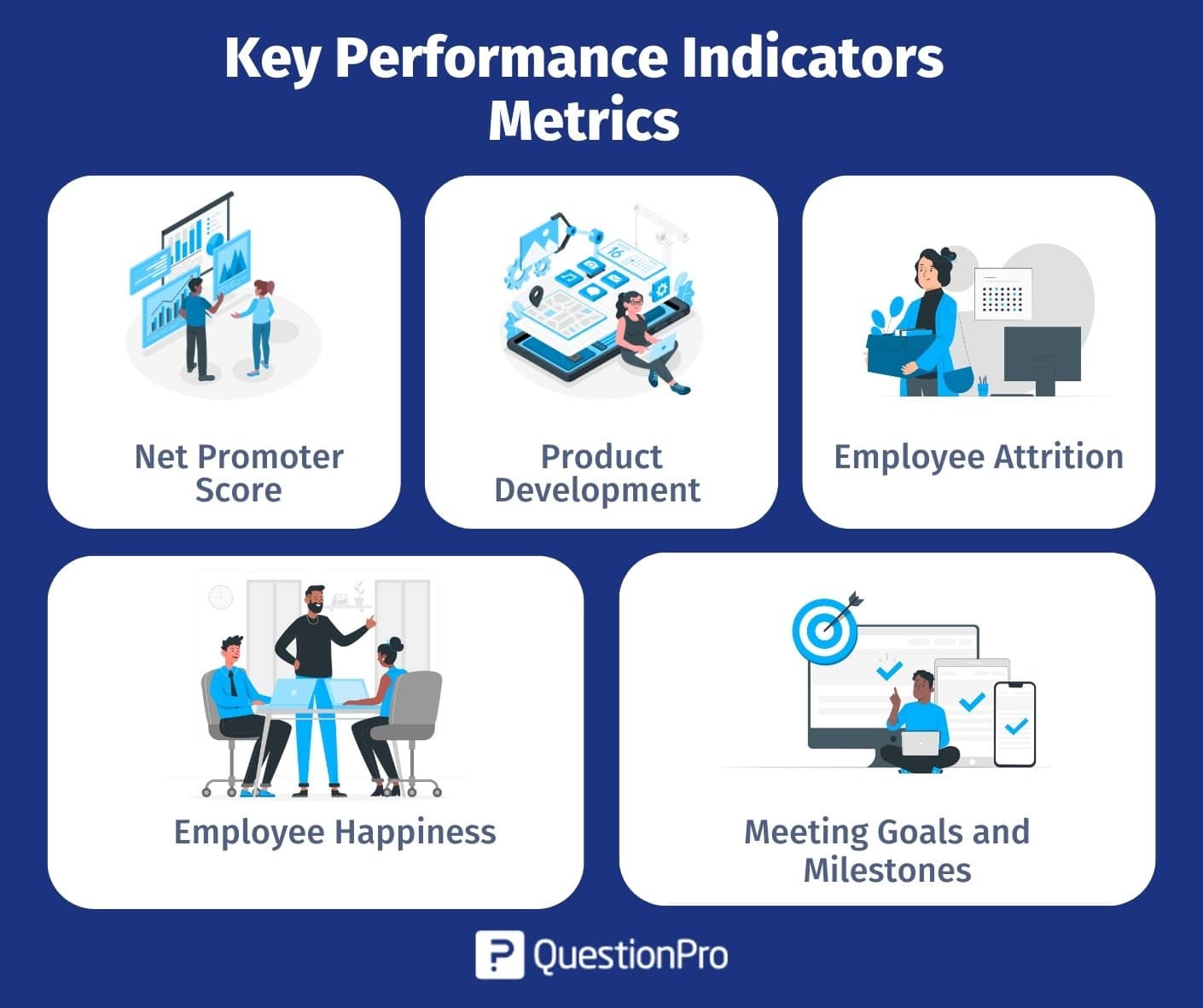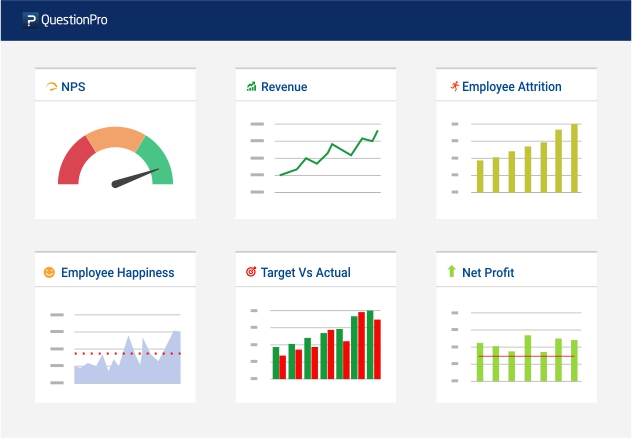
Key performance indicators are measurable metrics businesses use to assess their performance and progress toward their strategic objectives. Key performance indicators can assist businesses in determining how well they are meeting their goals, identifying areas for improvement, and making educated decisions about their business plans.
In this blog, we’ll go over the fundamentals of KPIs, such as their definition, metrics, and reporting, as well as examples of how they might be used in practice.
What are key performance indicators (KPI)
A Key Performance Indicator (KPI) is a measurable value that effectively demonstrates how efficiently an organization is achieving its key business objectives.
A good KPI is practical, concise, easy to monitor, and includes leading and lagging indicators. Leading indicators are business metrics used by corporate executives and other managers to track and analyze factors considered crucial to an organization’s success.
KPIs differ from organization to organization basis and are mostly based on business priorities. For example, one of the KPIs’ key performance indicators or public company will most likely be its share price, while the KPI for a privately owned business or a startup could be the new customers acquired.
Even direct business competitors are likely to monitor a different set of key performance indicators that are customized based on individual business strategies and management outlooks. The KPI may even vary within the same organization depending on the people working and their associated roles or position.
For example, the CEO of an organization may hold profitability as the most important measure of the organization’s success. However, the president of sales of the organization may view the ratio of successful sales pitches vs. lost clients as the highest priority KPI.
Different businesses and their units and the aligned departments are typically measured against their key performance indicators, which results in a mix of KPIs throughout the organization- some at the corporate level and some at the specific departmental level.
Learn more: 30+ FREE Employee Evaluation Survey Templates
Key performance indicator (KPI) example
Let’s assume that you work in the law enforcement department and monitor the speed of the drivers on the highway. You have been assigned a task to calculate the drivers’ average speed from July 2018 to November 2018, as many accidents happened during this time the previous year.
In this case, it will be helpful for you to know the average speed of drivers from the months except July to November. Say if the average speed of drivers for other months is 50 miles an hour, then you now need to calculate the average speed for the months mentioned in this example.
Assuming that the average speed of the drivers for July to November is 60 miles per hour, obviously, the drivers ride at 10 miles per hour speed higher than any of the months. Here your KPI is clearly defined:
- To calculate the average speed of the drivers from July 2018 to November 2018.
- To know the average speed of the drivers for all other months of 2018.
- To know the average speed of the drivers from July 2018 to November 2017.
- To know the average speed of the drivers for all other months for the year 2018.
Let us take another example here. Let us consider you are the owner of a local pub. In establishing average pints per person per visit as your key performance indicator, you noticed that you averaged 1.2 pints per person per visit compared to the average of 1.4 pints per person per visit and last month’s average of 1.3 pints per person per visit.
In this particular example, setting up specific KPIs will help you find the answers to the questions you might have previously been unaware of or missed.
Learn more: 50+ FREE Employee and Human Resouce Survey Templates.
Key performance indicators (KPI) metrics
First and foremost, any business owner or the CEO would ask you directly, “How do you think you will measure my organization’s performance”?
Well, the only way not to do it is to follow your gut. However, running a successful business requires a thorough understanding of analytics and an organized set of roles and responsibilities for all associated related departments. And all of this cannot be done without tracking the right key performance indicators and KPIs metrics.
Business metrics, also called Key Performance Indicators KPIs display a measurable value that determines the success of an organization in achieving its strategic goals. KPI metrics help determine if the organization or the business has achieved its goal in the designated time frame.
There are hundreds of KPI metrics, but there is no point in measuring all of them. Depending on your business goals, you should track your business performance metrics to understand in real time how your business is performing.
Tracking irrelevant metrics will distract you from focusing on the right things that truly indicators matter. The following are the most relevant KPI metrics that any business or organization should aim at measuring:

Net promoter score (NPS)
Net Promoter Score is a powerful metric not only to measure KPIs, your business, and customer satisfaction but also to measure performance your employee satisfaction levels. In the latter case, it is the employee Net Promoter Score.
How to measure:
This metric is measured on a 10-point scale which is determined by asking one powerful question:
“Considering your complete experience with our organization, on a scale of 0-10, how likely are you to recommend this organization to your family and friends.”
According to the Net Promoter Score calculation, there are three levels of employee or customer satisfaction:
- Promoters (score 9-10): These are highly loyal customers or employees who will undoubtedly spread positive word of mouth and will refer their family and friend to your business or organization
- Passives (score 7-8): These are satisfied but not-so-enthusiastic customers or employees who will move on quickly if they find a better option.
- Detractors (score 0-6): These are disappointed customers or employees who are bound to spread negative word of mouth or information about your company or organization that can easily damage your brand’s reputation.
Once you have gathered the relevant KPI data and evaluated the results, it gives you insight into how to improve your products, employee engagement, or employee satisfaction.
- Product development and sales revenue
It is another important metric as it tells a lot of things about your organization or business.
Month-over-month sales and product development show whether the employees are on target with the product development, whether the customers are interested in buying your products, and whether all your marketing efforts are being channelized in the right direction if you are still in the competition and much more.
When evaluating this metric and setting goals, it is important to understand that this metric is affected by multiple factors, like changes in the market, previous marketing campaigns, employee engagement, competitive actions, etc.
- Employee attrition
It is one of the key performance indicators metric for any organization or business. Employers generally consider attrition as the loss of a valuable workforce. As an employee leaves the organization, they take a refined skill set that they developed during their tenure in the organization.
Not to mention the cost of attrition is exceptionally high and can affect the financial sheets of an organization.
When an organization hires an employee, the related cost of onboarding, training, equipment, benefits, and incentives are also calculated. Additional cost includes staff time for the recruiters, participating hiring managers, etc. Therefore, it becomes one of the key metrics.
- Employee happiness
According to new research, employees are 12% more effective at work if they are happy. It’s simple math; satisfied employees = productive employees. Keeping a high employee or customer satisfaction level leads to a long-term commitment to the team and the organization.
That is why it is important to regularly check whether your employees are happy and excited to be a part of the organization.
- Meeting goals and milestones Every business has strategic goals and milestones to give you a quick overview of your company’s activities, target setting, the time allotted to achieve that target, etc. A timely check on the number of targets assigned and the goal setting for your employees will help you and your organization achieve milestones.
Learn more: employee Net Promoter Score- Definition, Question, Formula, Calculation, and Benchmark.
Key performance indicators KPIs report
A KPI report is a strategic objects-tackling method that will help your organization define and track the exact number you want to achieve, whether in terms of employee retention, Net Promoter Score, Employee Engagement and satisfaction, business revenue, financial growth, etc.
For example, if you want to track your employee attrition rate by region (locations where you have your offices), you would need to know the attrition rates for the previous years, the effective cost of recruitment and onboarding, etc.
Collect all the necessary information related to the activities and then use this data to analyze and compare the attrition rate from the previous years.
It is just one example. The dashboard can have any number of attributes that you decide needs to be a part of the key performance indicators metrics.
Revenue is an essential attribute and is usually a major marketing and sales team KPI. The targets are decided at the beginning of the financial year or even before. Imagine how easy it would be to track the progress through the year!
Here is an example of how a KPI report looks:

In this report, you can see the different key performance indicators and KPIs metrics. Organizations can keep themselves organized at any given point in time and touch base with department heads to follow up on the progress their employees are making.
How QuestionPro helps in measuring key performance indicators?
QuestionPro can assist in measuring Key Performance Indicators (KPIs) by offering a variety of features and tools that ease data collecting, analysis, and reporting. Here’s how QuestionPro can help you measure KPIs:
- Survey creation
QuestionPro is an easy-to-use interface for creating customized surveys that are geared to specific KPIs. To collect data that is linked with your KPIs, you can create surveys with appropriate questions and response options.
- Feedback collection
QuestionPro offers multiple feedback collection tools, including online surveys, email surveys, mobile surveys, and paper surveys. You can distribute surveys to your target audience, such as customers, employees, or stakeholders, and collect the data required to measure your KPIs.
- Question types and logic
QuestionPro offers multiple-choice, open-ended, Likert scale, and rating scale questions. These question types capture quantitative and qualitative KPI data. QuestionPro’s logic features let you apply skip patterns and branching based on respondents’ answers to collect KPI-relevant data.
- Data analysis
QuestionPro delivers strong feedback analysis tools once the feedback is collected. Real-time reporting, data filters, cross-tabulations, and statistical analysis are all available for analyzing survey replies. These tools assist you in interpreting and comprehending data regarding your key performance indicators (KPIs).
- Benchmarking
QuestionPro’s benchmarking tools allow you to compare your KPI measurements to industry standards or competitor benchmarks. This allows you to acquire insights about your relative performance and find areas for improvement.
- Reporting and sharing
QuestionPro lets you create detailed reports and share them with stakeholders. You can export reports in PDF or Excel and send them to KPI measurement stakeholders.
- Continuous feedback
QuestionPro lets you collect regular feedback and track KPI improvements with pulse surveys and automatic survey distribution. This lets you track performance and enhance KPIs with data.
You may effectively measure your KPIs by collecting, evaluating, and reporting the relevant data. QuestionPro allows you to track performance, find areas for development, and make educated decisions that align with your organization’s goals.
Don’t forget to examine both gross and net profit margin to better understand how good your company is at creating a high return. Sign up and see how you can leverage the tool to improve your people processes.







